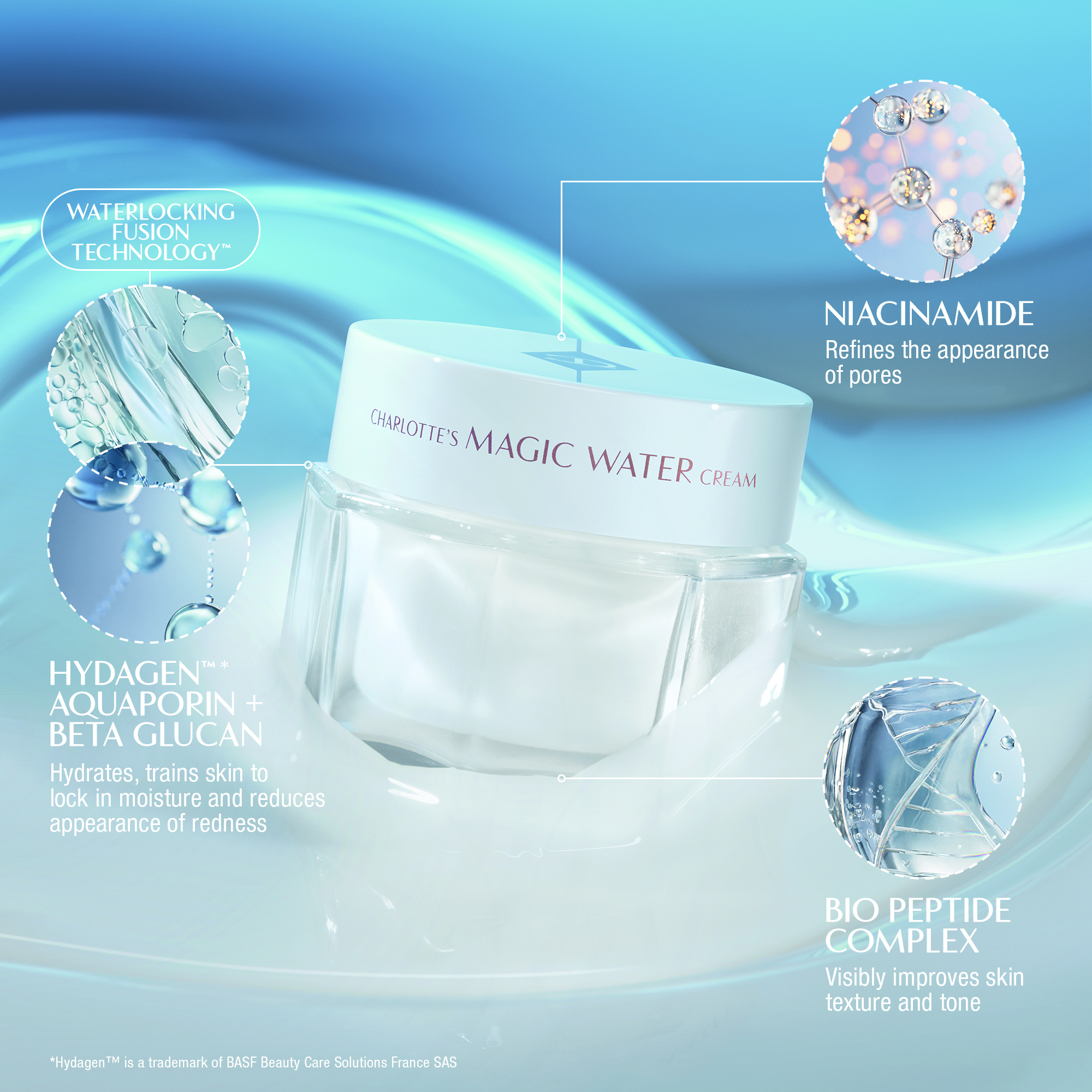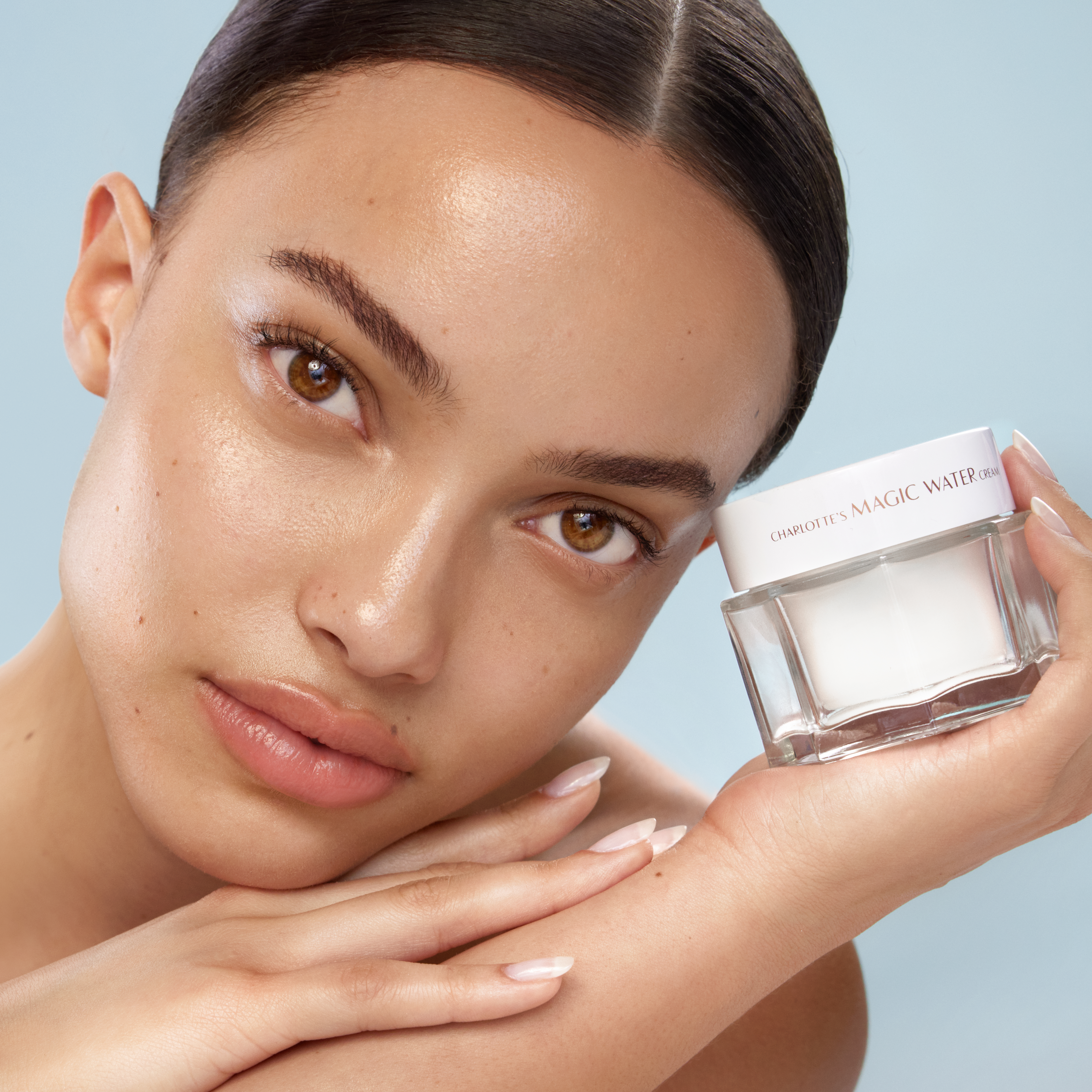Discover NEW! Waterlocking Fusion Technology™ with Aquaporin
NEW! Waterlocking Fusion Technology™ is a powerful hydration complex made up of a unique combination of HYDAGEN™ Aquaporin and HYDRASENSYL™ Glucan Green. Its elements work in synergy to boost Aquaporin production, flooding the skin with micro droplets for 100-hour hydration* and training it to retain more moisture over time.

HYDAGEN™ Aquaporin – or glycerol glucoside – is a fusion of sugars glycerin and glucose. While creating Charlotte’s Magic Water Cream, my team of skincare experts decided to pair glycerin and glycerol glucoside; Glycerin is a hydrating ingredient that’s commonly used in skincare, however, glycerol glucoside is even more hydrating than glycerin alone, and also helps glycerin to become even more hydrating when the pair is used together. Charlotte’s Magic Water Cream contains both of these hydration heroes as well as hyaluronic acid to give the gel-cream formula even greater depth of moisture.
HYDRASENSYL™ Glucan Green is the other key player that makes up NEW! Waterlocking Fusion Technology™. It’s a popular food supplement that is used in skincare to help strengthen the skin barrier; reduce the appearance of redness; and to give skin a hydrating, plumping effect. HYDRASENSYL™ Glucan Green has a wide-branched cellular structure like hyaluronic acid and a triple-helix structure like collagen, making it an extremely efficient hydrator. Most Beta Glucans are sourced from mushrooms – a process that breaks down the cellular structure of the molecules – whereas the variety used in my Waterlocking Fusion Technology™ is created through the fermentation of yeast to create the purest version, isolating each Beta Glucan to retain full functionality.
This expert blend of instant and long-term hydrators that makes up Waterlocking Fusion Technology™ works in hydration harmony. These powerhouse ingredients are the stars of NEW! Charlotte’s Magic Water Cream, helping skin to look instantly revived and drenching it with deep, long-lasting hydration.































































































